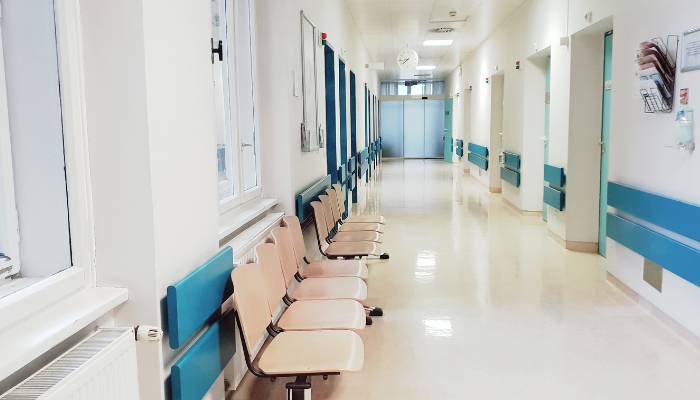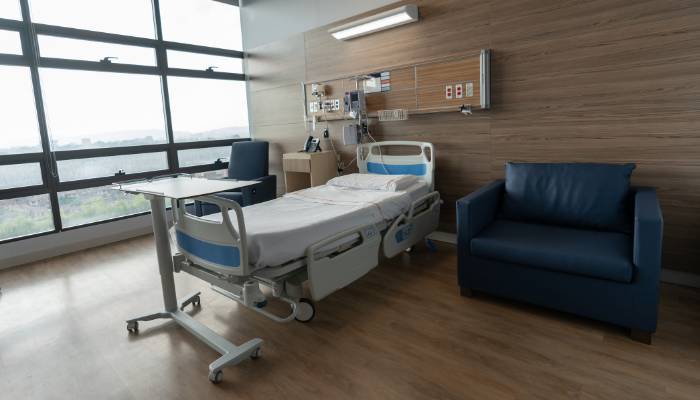
Hospital furniture and device are essential components of a healthcare environment that can affect the comfort, safety, health and well-being of patients, visitors and staff. Choosing the right furniture and device for a hospital can be a challenging task, as there are many factors to consider, such as durability, hygiene, functionality, design, cost and sustainability. Moreover, different types of hospitals may have different needs and preferences for their furniture and device selection. In this article, we will provide some suggestions on how to choose furniture and device for general hospitals, private hospitals and various specialized hospitals.
Different types of hospitals
General Hospitals
General hospitals are large-scale healthcare facilities that provide comprehensive medical services for a wide range of patients with different conditions. They typically have multiple departments or units that cater to different specialties or levels of care, such as emergency department, intensive care unit (ICU), operating room (OR), general ward (GW), outpatient clinic (OPD), etc. Therefore, general hospitals need furniture and device that can meet the diverse and complex needs of their patients and staff.
Private Hospitals
Private hospitals are healthcare facilities that operate independently from public funding or control. They typically offer more personalized high-quality luxury or specialized services for their patients who pay higher fees or have private insurance coverage. Therefore private hospitals may have different needs
List of furniture and device that general hospitals need
Some of the common furniture and device that general hospitals need include:
Hospital Beds:
Hospital beds are one of the most important pieces of furniture in a hospital setting. They should be comfortable, adjustable, durable and easy to clean. They should also have features such as side rails, wheels with brakes, removable headboards, intravenous (IV) pole mounts, mattress covers, bedside tables, etc., that can enhance patient safety and convenience.
Chairs:
Chairs are another essential piece of furniture in a hospital setting. They should be ergonomic, comfortable, supportive and adaptable to different users and situations. They should also be easy to clean and maintain. Some examples of chairs that general hospitals need include recliners, sleeper chairs, visitor chairs, office chairs, dining chairs, wheelchairs, etc.
Tables:
Tables are also important pieces of furniture in a hospital setting. They should be sturdy, stable and functional. They should also have features such as adjustable height, casters or wheels for mobility and storage space for convenience. Some examples of tables that general hospitals need include overbed tables, exam tables, operating tables, dining tables, desk tables etc.
Cabinets:
Cabinets are useful pieces of furniture in a hospital setting. They provide storage space for medical supplies and equipment such as instruments, medications, dressings etc., as well as personal belongings of patients and staff. Cabinets should be lockable for security reasons and easy to access for efficiency reasons. They should also be durable and easy to clean to prevent contamination or infection.
Medical carts:
Medical carts are mobile devices that carry medical supplies and equipment such as medications injections syringes blood pressure monitors thermometers etc., to different locations within the hospital. They should be lightweight easy to maneuver and organized to facilitate quick access and delivery. They should also have features such as drawers locks brakes handles etc., that can enhance safety convenience.

Suggestions on the selection of medical furniture for private hospitals
Private hospitals are healthcare facilities that operate independently from public funding or control. They typically offer more personalized, high-quality, luxury or specialized services for their patients who pay higher fees or have private insurance coverage. Therefore, private hospitals may have different needs and preferences for their furniture and device selection than general hospitals.
Some of the factors that private hospitals should consider when choosing furniture and device include:
- Comfort and safety: Private hospitals should provide furniture and device that can enhance the comfort and safety of their patients and visitors. For example, they can choose recliners, sleeper sofas, entertainment systems and personalization options for patient rooms; ergonomic chairs, desks and carts for staff; comfortable sofas, chairs and tables for waiting areas; etc. They should also ensure that the furniture and device are easy to clean, maintain and adjust to prevent infection or injury.
- Design and aesthetics: Private hospitals should also provide furniture and device that can reflect their brand image and create a warm, welcoming and luxurious atmosphere for their patients and visitors. For example, they can choose furniture and device that have elegant colors, shapes, materials and finishes; that match their interior design and architecture; that display their logo or name; etc. They should also avoid cluttering or overcrowding their spaces with unnecessary or outdated furniture or device.
- Functionality and efficiency: Private hospitals should also provide furniture and device that can support their workflow and service delivery in an effective and efficient manner. For example, they can choose furniture and device that have features such as drawers, locks, brakes, handles, etc., that can facilitate quick access and delivery; that have storage space for medical supplies and equipment; that have casters or wheels for mobility; etc. They should also ensure that the furniture and device are compatible with their technology systems such as electronic health records (EHR), telemedicine platforms etc.
Suggestions on the selection of medical furniture for various specialized hospitals
Specialized hospitals are healthcare facilities that focus on a specific field or specialty of medicine such as dental hospital, ENT hospital, plastic surgery hospital etc. They typically offer more advanced, expert or innovative services for their patients who have specific needs or conditions. Therefore, specialized hospitals may have different needs and preferences for their furniture and device selection than general or private hospitals.
Some of the factors that specialized hospitals should consider when choosing furniture and device include:
- Specialty-specific requirements: Specialized hospitals should provide furniture and device that can meet the specific requirements of their field or specialty of medicine. For example, they can choose furniture and device that have features such as dental chairs, operating microscopes, suction units, etc., for dental hospitals; otoscopes, laryngoscopes, audiometers, etc., for ENT hospitals; liposuction machines, laser devices, skin grafting tools, etc., for plastic surgery hospitals; etc. They should also ensure that the furniture and device are compatible with their diagnostic and therapeutic procedures and comply with their safety and quality standards.
- Patient comfort and satisfaction: Specialized hospitals should also provide furniture and device that can enhance the comfort and satisfaction of their patients who may have high expectations or anxiety about their treatment outcomes. For example, they can choose furniture and device that can create a relaxing and soothing atmosphere such as massage tables, aromatherapy diffusers, music systems, etc.; that can reduce pain or discomfort such as heated blankets, pillows, ice packs, etc.; that can improve communication or education such as monitors, tablets, headphones, etc.
- Staff efficiency and productivity: Specialized hospitals should also provide furniture and device that can support their staff’s efficiency and productivity in delivering high-quality care. For example, they can choose furniture and device that can facilitate easy access and storage of medical supplies and equipment such as carts, cabinets, shelves etc.; that can enable smooth workflow and collaboration among staff such as desks, chairs, phones etc.; that can improve ergonomics and prevent fatigue or injury such as stools, footrests etc.
Factors to consider when choosing hospital furniture and devices?
- Adapt to ergonomics: Ergonomic furniture and device can enhance the comfort and efficiency of both patients and staff. They can also prevent injuries or fatigue caused by poor posture or repetitive movements. For example, ergonomic chairs, desks, carts, stools, etc., can help staff work more effectively; ergonomic beds, recliners, tables, etc., can help patients recover more comfortably.
- Meet patient requirements: Furniture and device should be chosen according to the diverse requirements of patients who may have different conditions or needs. For example, furniture and device should be suitable for children, elderly, disabled or bariatric patients; they should also accommodate patient’s family or visitors who may stay with them; they should also provide features such as adjustable height, side rails, wheels with brakes, etc., that can enhance patient safety and convenience.
- Choose quality over quantity: Furniture and device should be of high quality that can last long and perform well. They should also utilize the hospital space smartly without cluttering or overcrowding it. It is advisable to go for superior quality furniture and device that have features such as drawers locks brakes handles etc., that can facilitate quick access and delivery; that have storage space for medical supplies and equipment; that are compatible with technology systems such as electronic health records (EHR), telemedicine platforms etc.
Conclusion
Choosing furniture and device for a hospital can be a challenging task, as there are many factors to consider, such as comfort, safety, hygiene, functionality, design, cost and sustainability. Moreover, different types of hospitals may have different needs and preferences for their furniture and device selection.

Lifebing is driven by an unrelenting passion for promoting health and well-being, our team is wholly committed to curating exceptional content and immersive experiences.
